 |
 |
 |
| |
Blood-Brain Barrier Permeability and Neurocognitive Performance in
HIV+ Adults....
|
| |
| |
cross-sectional analysis of 169 patients in CHARTER....from Jules: note the 2nd slide below where ART penetration & possible toxicity are discussed
".......ART and guidance for the development of individualized
treatment regimens that may more effectively improve
disease outcomes"


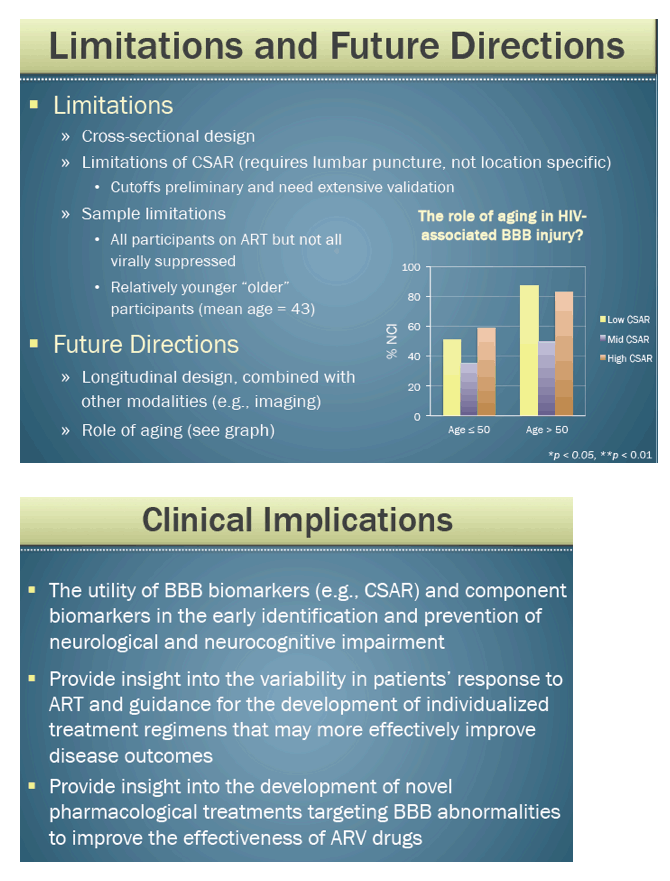
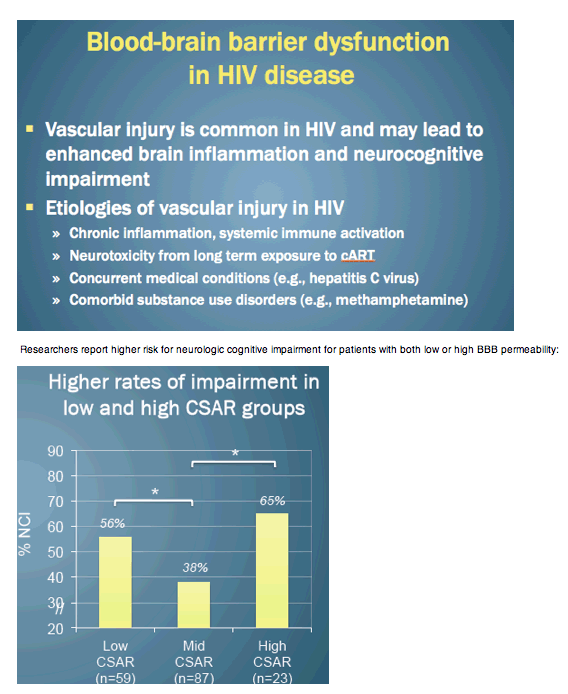
Jennifer E. Ludicello, Ph.D.
HIV Neurobehavioral Research Program
Department of Psychiatry
University of California, San Diego
Reported by Jules Levin
7th International Workshop on HIV & Aging, Sept 26-27 2016
Washington, D.C.
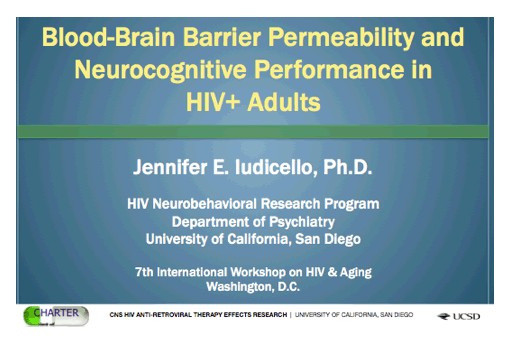
While the incidence of HIV-associated dementia has declined since the advent of more effective antiretroviral therapy (ART), HIV-associated neurocognitive disorders (HAND) remain common, even despite effective treatment, with up to 50-60% of individuals experiencing at least mild neurocognitive impairment, which can impact everyday functioning and health-related outcomes. However, the persistence of adverse central nervous system (CNS) consequences despite more effective ART is not yet fully understood. Non-exclusive explanations include comorbid conditions that may affect cognition in individuals aging with HIV (e.g., vascular disease, metabolic abnormalities), other common comorbidities such as HCV and substance use, irreversible damage prior to initiating treatment, and suboptimal effectiveness or neurotoxicity of antiretroviral therapy. One explanation for the inconsistency is that unmeasured factors are influencing the findings.
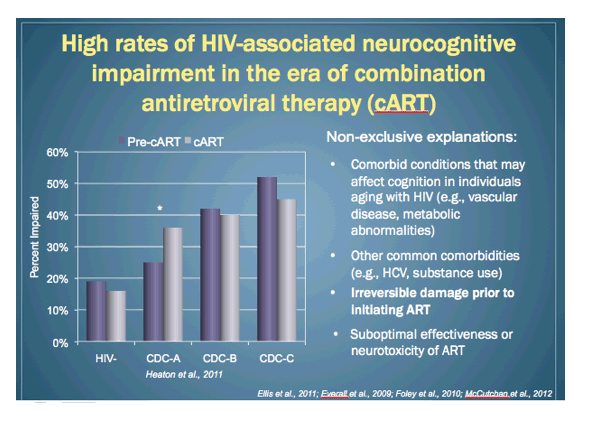
One explanation for the inconsistency is that unmeasured factors are influencing the findings. One such factor may be blood-brain barrier (BBB) permeability, which can vary substantially between individuals. The BBB regulates transport of molecules into the CNS and protects the CNS from potentially harmful substances. BBB damage or dysfunction can increase permeability, which has been observed across a wide range of clinical populations (e.g., vascular dementia), including HIV. BBB damage occurs early in the course of HIV and tends to be chronic and slowly progressive. A combination of viral and host factors likely contribute to this BBB damage, including infection of endothelial cells, persistent inflammation, chronic immune activation, and concurrent medical and psychiatric disorders, as well as normal aging and aging -related conditions such as vascular disease.
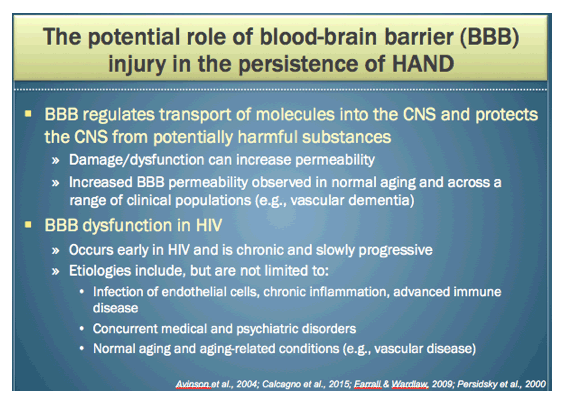
The relationship between BBB permeability and CNS outcomes may be quite complex. Generally speaking, high BBB permeability leads to adverse effects such as neurological damage and potentially NCI due to greater influx of HIV and other neurotoxins into the CNS. With regard to ART drug distribution into the CNS, greater BBB permeability could have dual effects. If permeability is increased, ART drugs might more easily reach therapeutic concentrations in the CSF, resulting in better suppression of HIV and potential improvement of neurocognitive impairment. Higher drug concentrations might also increase the risk of neurotoxicity, however, and lead to neurocognitive impairment. These dual effects may explain, in part, the inconsistencies in the literature with regard to the beneficial impact of ART on NCI. With regard to low BBB permeability, permeability is decreased, ART drugs - particularly those with already marginal distribution into the CNS - might be less likely to reach therapeutic concentrations, leading to loss of HIV suppression, CSF viral escape, and the possible emergence of drug resistance and potential NCI. As there may be many ways in which alterations in BBB permeability may result in neurocognitive impairment...
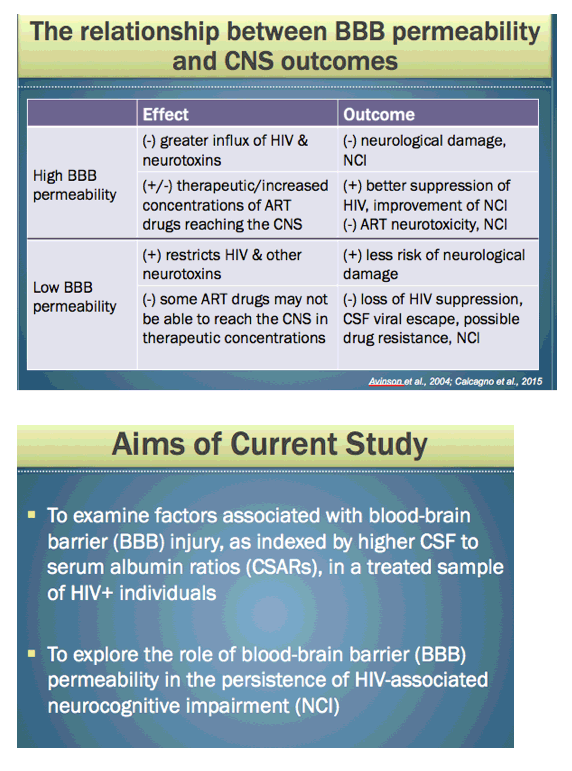
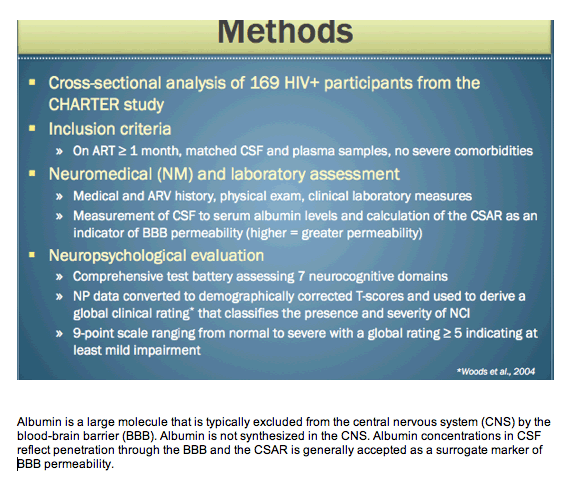

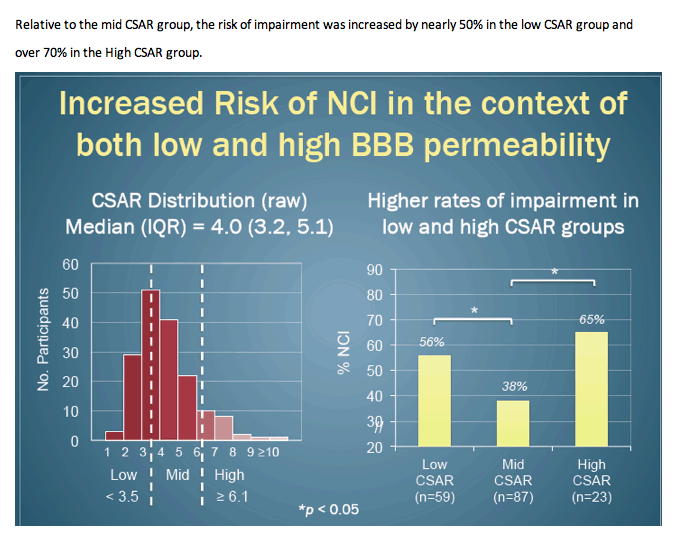
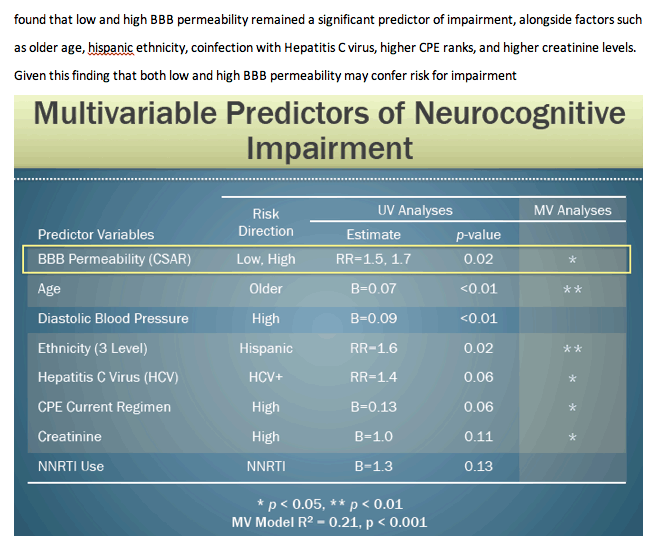
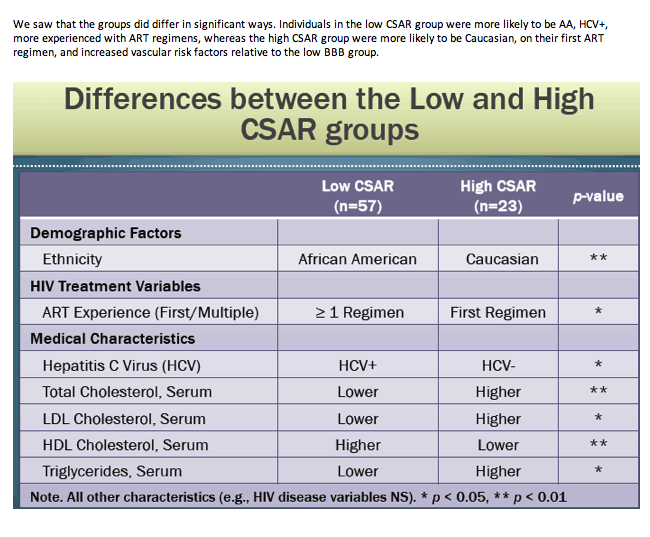
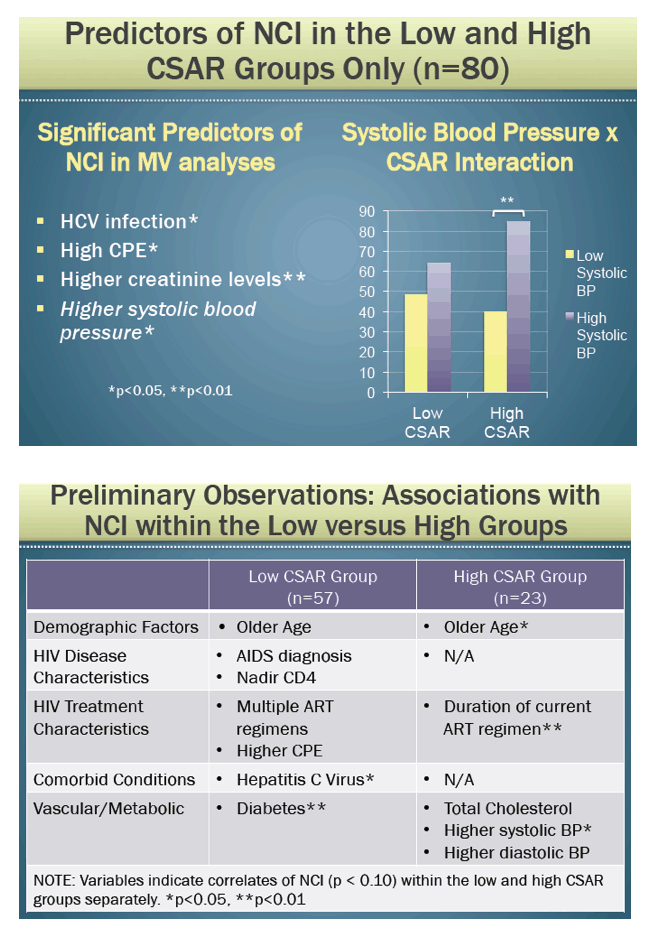
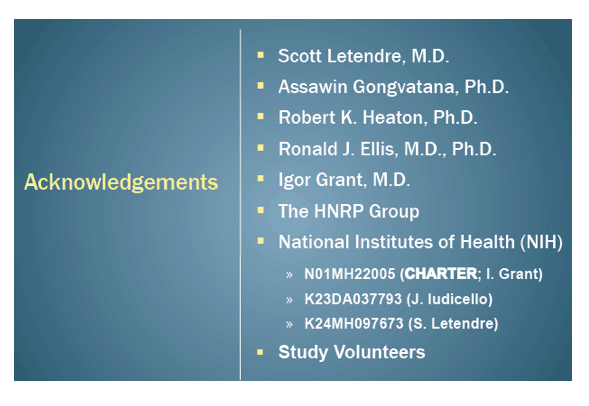
|
| |
|
 |
 |
|
|